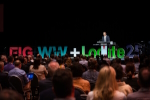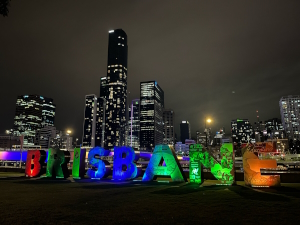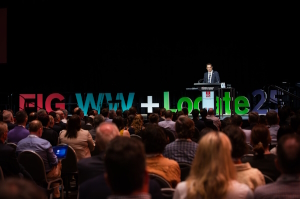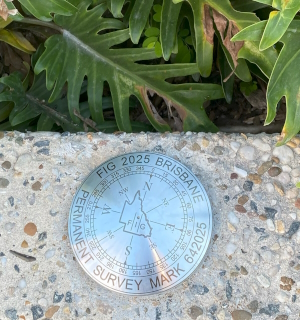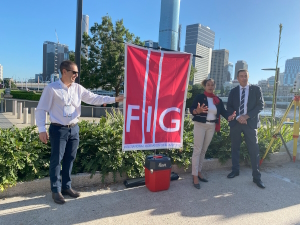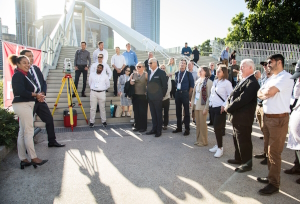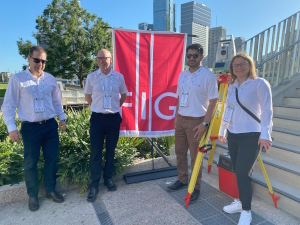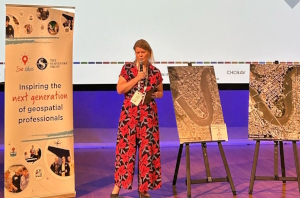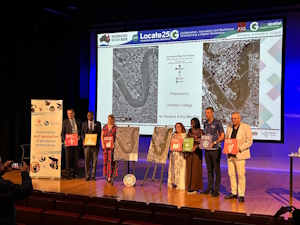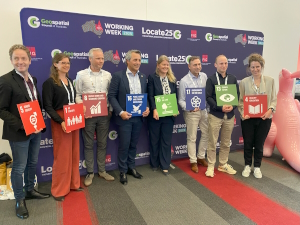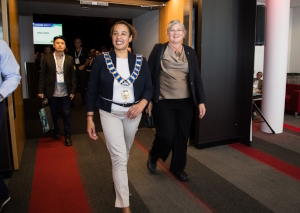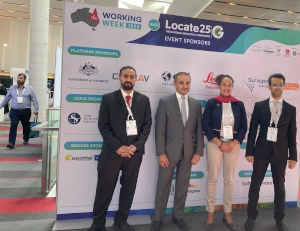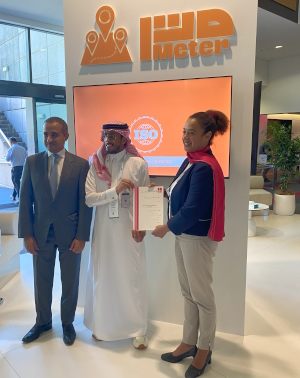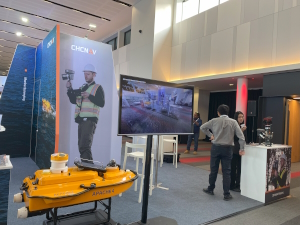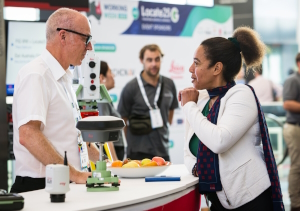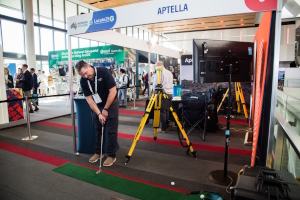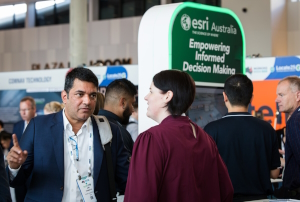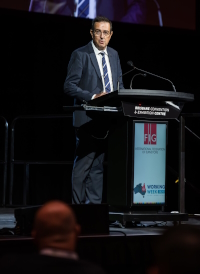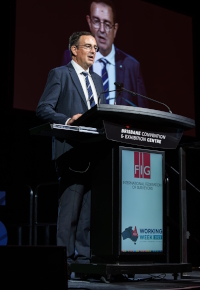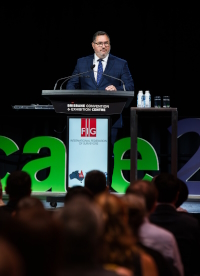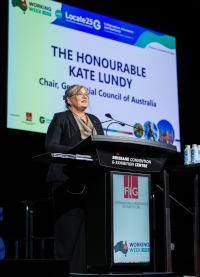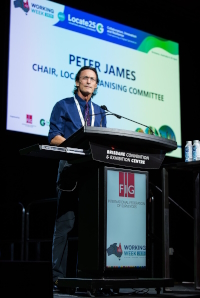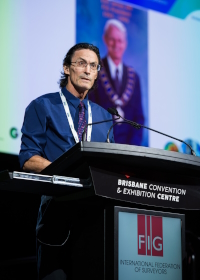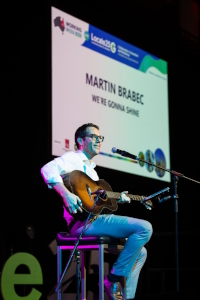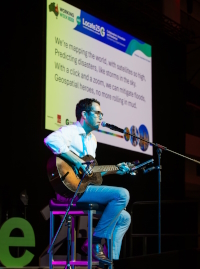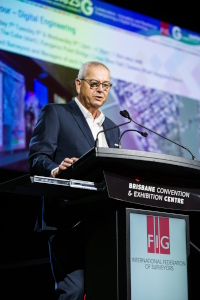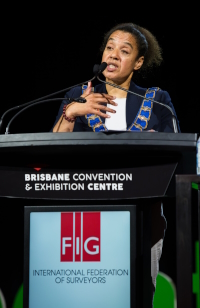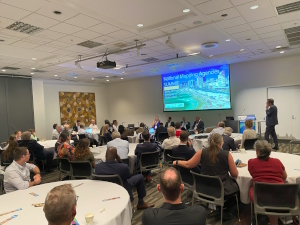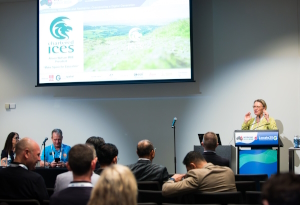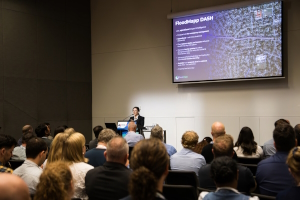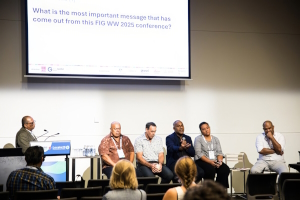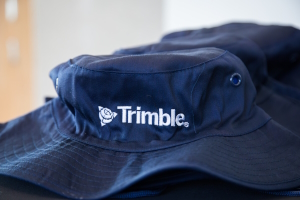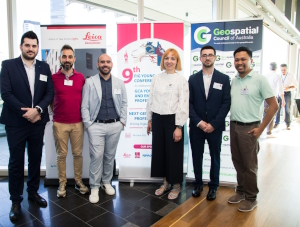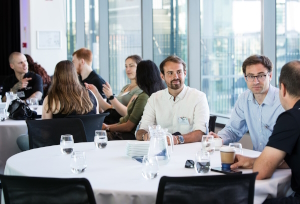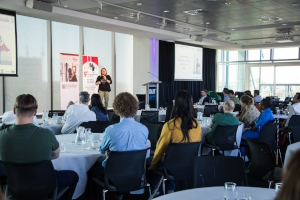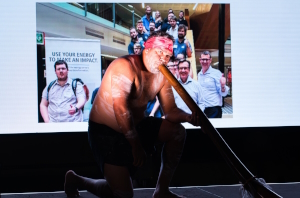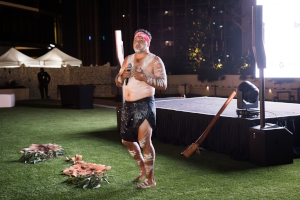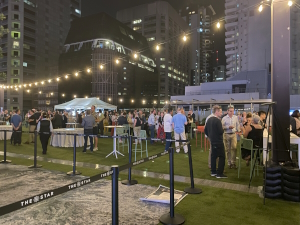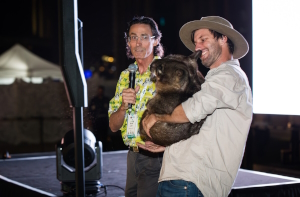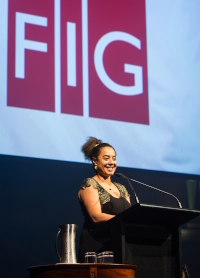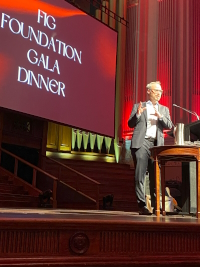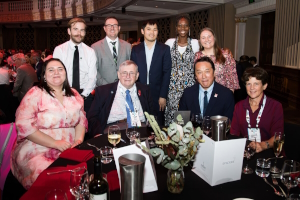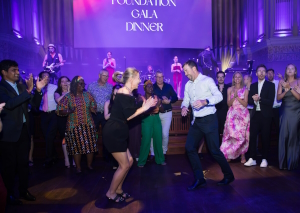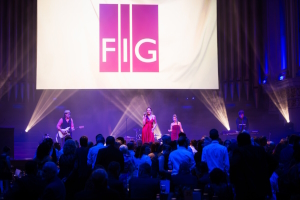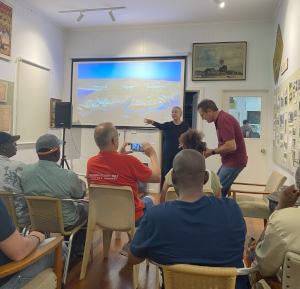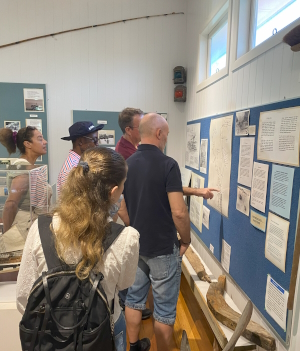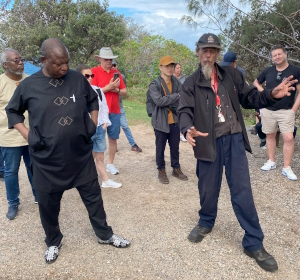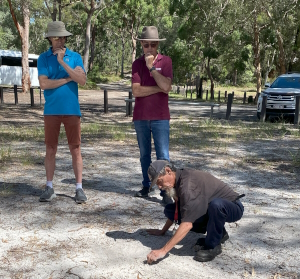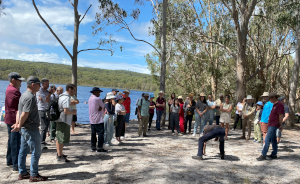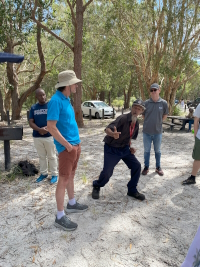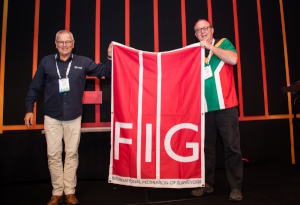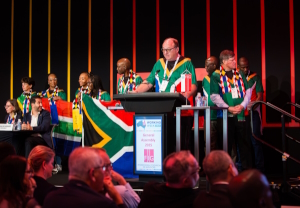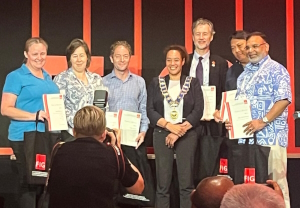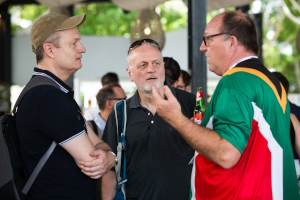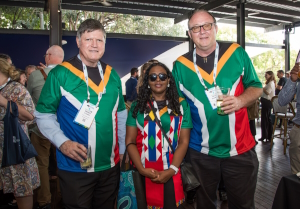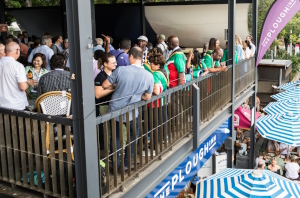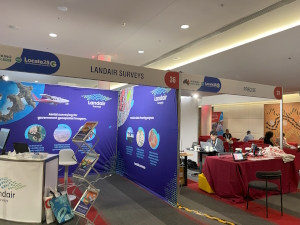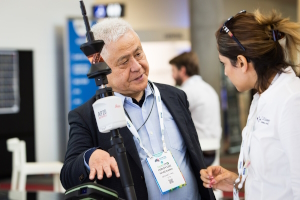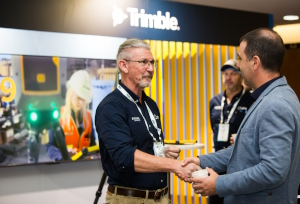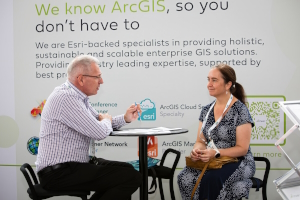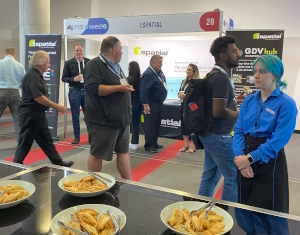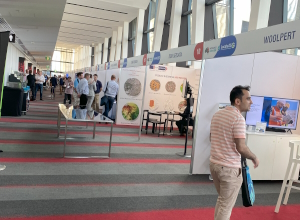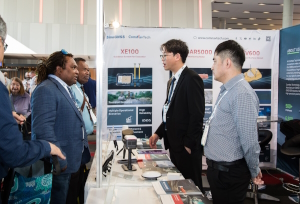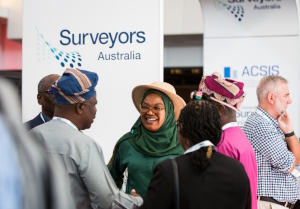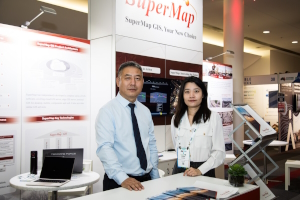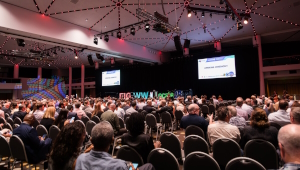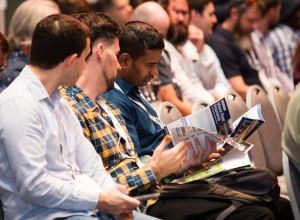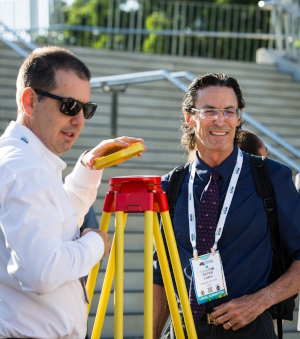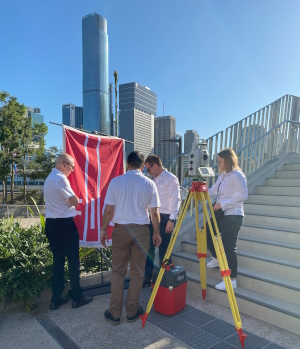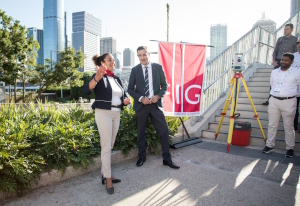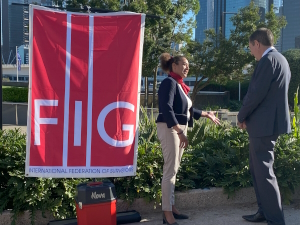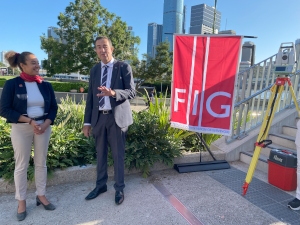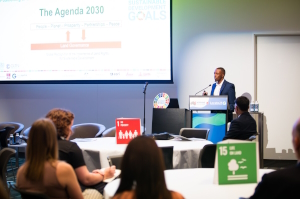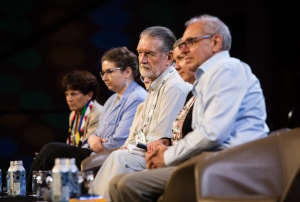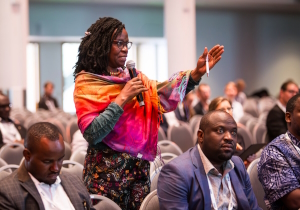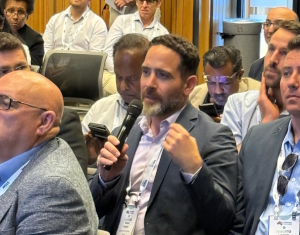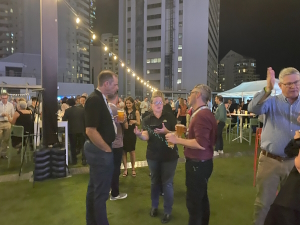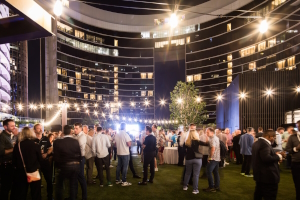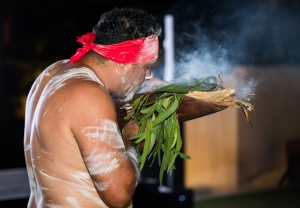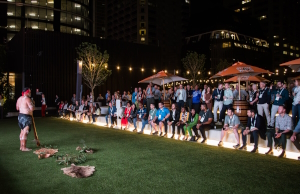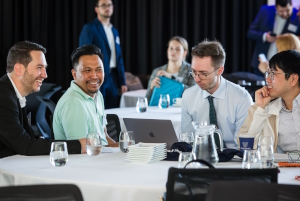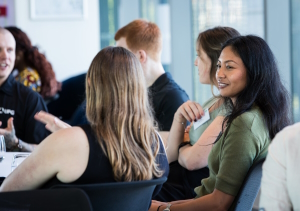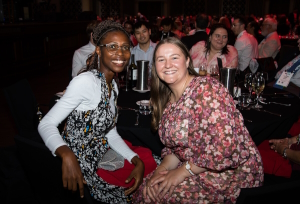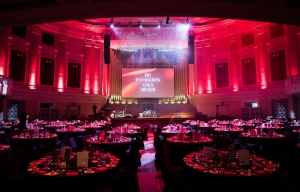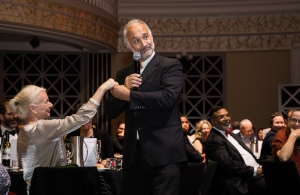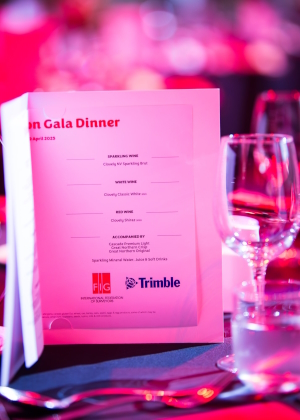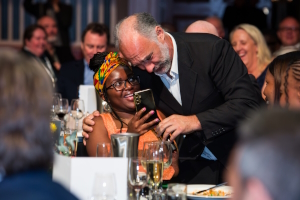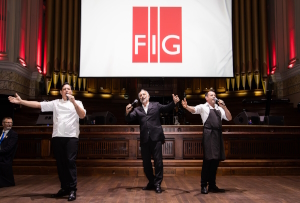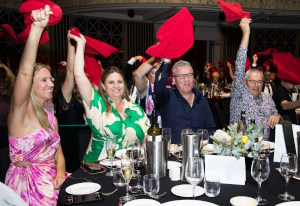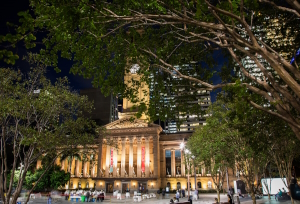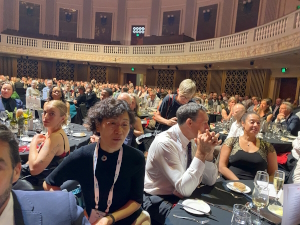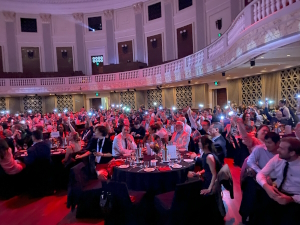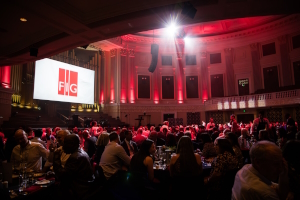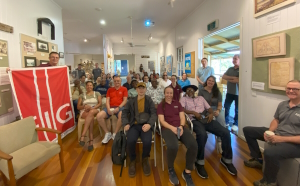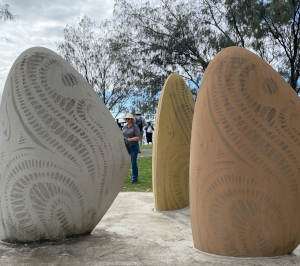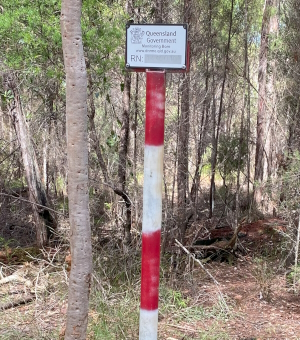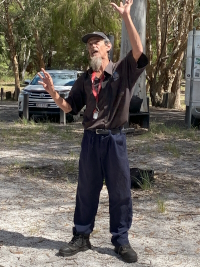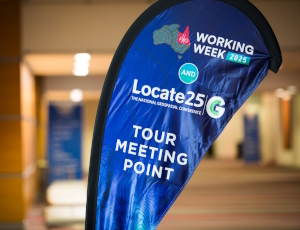News in 2025

|
G'day to Brisbane and Aussie-land - FIG Working Week 2025 report
Brisbane, Australia 6-10 April 2025
Brisbane, Australia is the perfect city for a conference. The
conference centre BCEC is located in the city centre, hotels are in
close proximity and in walking distance to BCEC, and the newly opened
walking bridge between the north and south part of the city makes
walking even easier. The bridge was used frequently by the participants,
to and from hotels, and for the Welcome Reception held on the north side
in the 7th floor open-air lawn between the Star Brisbane Resort’s four
towers. Several technical walking tours were organised, the gala dinner
was held in the newly renovated and beautiful main hall of the town
hall, also in walking distance, and to make use of the water, too, a
survey vessel was sailing up and down the river with Working Week
participants.
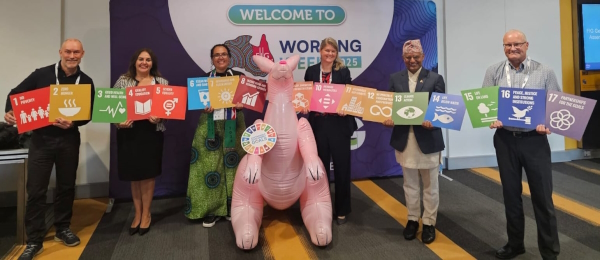
Legacy projects
Survey Mark in Brisbane
At the south side of the walking bridge, in recognition of the FIG
Working Week and Locate25, a special survey mark was installed and
revealed on Monday morning 7 April, right before the Opening Ceremony.
The permanent survey mark (PSM) has been installed by the Queensland
Government, near the start of the South Bank end of the Neville Bonner
Bridge that spans the Brisbane River. The PSM signifies the role played
by surveying and spatial sciences in urban development, infrastructure
projects and land management.
The PSM was officially unveiled by Steve Jacoby, Conference Convenor
and Executive Director, Spatial Information | Georesources in the
Queensland Department of Natural Resources and Mines, Manufacturing and
Regional and Rural Development, together with FIG President Diane
Dumashie. For FIG it is important to include legacy projects in our
conferences and at each destination. This is one of the strengths by
moving the FIG Working Week around the world each year to different
countries and cities. Permanent Survey Marks are fundamental to the
alignment of spatial data with physical infrastructure, enabling
accurate mapping, land surveys and large-scale construction projects.
School teachers, SDGs and She Maps
Other legacy projects during the Working Week included special drone
sessions with school teachers and a special focus on the SDGs in the
technical programme, hereunder one session each day with specific focus
on Private Sector Contributions to the SDGs, the crucial role of
governments to achieve SDGs and the nexus between SDGs and Professional
Education in the Geospatial World, as well as special
displays of FIG and GCA on the enormous screens of the Cube, the
technical university area.
The two FIG Task Forces on Diversity and Inclusion and FIG and the
SDGs, in collaboration with She Maps, organised a touching legacy
project which will stand as a lasting testament to this event. They had
developed a visual piece that connects past, present and future:
comparative images of Brisbane in 1975 and 2025, which was accompanied
by a commemorative plaque. This legacy is not just a frame with images,
but a visual story that reminds us how much a city can change, and how
essential geospatial technologies are to understand that change. Beyond
that, it leaves behind something tangible for the next generation. There
is a need for teachers who inspire, we need images that tell stories,
and we need young people to see themselves as part of the change.
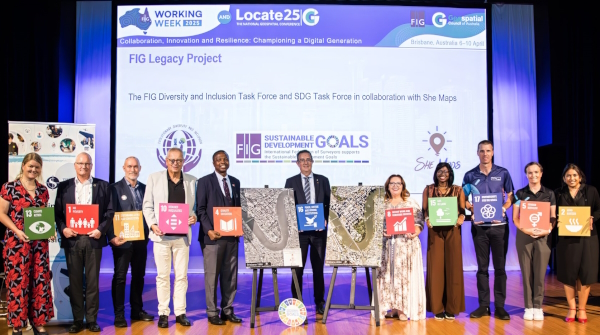
Meeting in Australia
Around 1,400 national and international participants from 85
countries found their way to Brisbane, located in Queensland, Australia.
Queensland Government was a central partner for the conference, with
Executive Director Steve Jacoby, Queensland Government, as Conference
Convenor. The conference thanks him and his staff for their amazing
involvement and input, both to the technical programme, they organised
all technical tours, and arranged with a survey vessel that was
available during all three conference days, and which had many curious
participants on board. FIG commission 4 delegates (Hydrography
surveying) had a particular interest in the vessel – however missed
their appointment as they could not find their way to the landing stage.
An extra tour was organised for them.
The local organisers in Brisbane, with Peter James in the lead, had
secured special spots for the welcome reception, gala dinner, as well as
invaluable contact to the universities in Brisbane and further input to
the technical and social programme.
Sponsors and exhibitors
A good number of national and international sponsors and exhibitors
filled out the bust hallways of the Plaza floor at BCEC. Many with
creative and impressive stands, and with the exhibitors located in the
hallways there was a constant flow of participants around the stands.
Many constructive conversations were held, and the exhibitors seemed to
be busy at most times.
Both large and smaller stands were to be found, even small 1x2
display pods which seemed to be quite popular.
A very large thanks to all sponsors and exhibitors – without you the
conference would not have been possible.
Opening Ceremony
The local organisers had ensured a powerful opening with Songwoman
Aunty Maroochy, an Elder and the Songwoman and Law-woman of the Turrbal
People, the original inhabitants of Brisbane, and the Dippil people of
the Sunshine Coast area. She is a direct descendant of Daki Yakka –
Chief of the Old Brisbane tribe. She told and sang the story of her
ancestors from the region.
Hereafter the honourable Anderew Powell MP Minister for the
Environment and Tourism, and Minister for Science and Innovation took
over the stage welcoming the conference to Brisbane, highlighting the
importance of the work of surveyors and geospatial experts. Conference
Convenor Steve Jacoby, competently guided all 1,400 participants through
the opening ceremony as Master of Ceremony. Kate Lundy, Chair of the
Board of GCA welcomed all to Brisbane and Australia, with an exciting
merge of the national event Locate25 with FIG Working Week 2025, hoping
that both national and international participants will learn from each
other and share good time together. Peter James, chair of the LOC, held
an address on behalf of his father, Earl James, who is Honorary
President of FIG (read more about Earl James experiences in FIG in FIG
publication 75). A both fun and amazing conference theme song was
written and performed by Martin Brabec, Australia (QR code).
FIG President Diane Dumashie was final speaker at the Opening Ceremony,
which was concluded with the FIG Fanfare which marked the conference to
be opened. After the opening ceremony the dignitaries declared the
exhibition open and walked through the exhibition talking with the
various exhibitors.
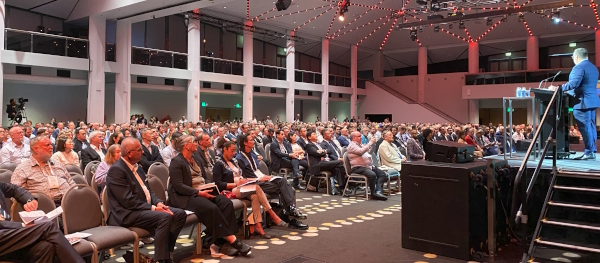
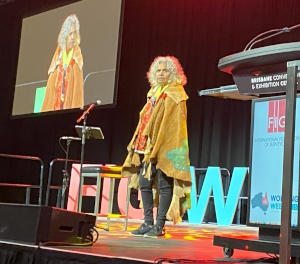 |
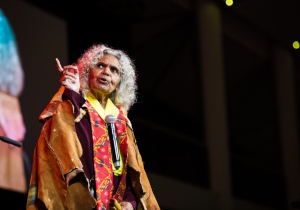 |
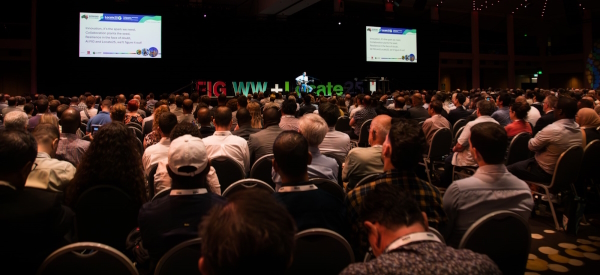
Plenary sessions
Two-hour plenary sessions were organised, packed with presentations
and discussions. At each of the plenary sessions four high-level
presenters gave their input under the overall theme of Collaboration,
Innovation and Resilience: Championing a Digital Generation. After a
round of Q&A to the four presenters as a new feature, an “ignite
presentation” which is a short and lively presentation was a memorable
final of each of the sessions.
Ignite presentations
These ignite presentations consisted of state-of-the-art examples and
best practice projects. On Monday 7 April Geoscience Australia,
represented by Lisa Bush, head of the national location information
branch talked about how she had worked on building Australia’s first
national geospatial information ecosystem with the Digital Atlas of
Australia. The Tuesday ignite presentation was held by CEO Geoff Smith,
Australian Spatial Analytics on Unlocking enormous potential: The
neurodiverse geospatial workforce revolution – ASA is a non-for profit
social enterprise revolutionising the geospatial sector by empowering
neurodivergent talent. The last ignite speaker was Kass Boladeras
representing Winyama, ensuring indigenous communities to have access to
the digital tools and opportunities they need to thrive; talking about
the power of indigenous mapping, through which project First Nations
people are harnessing cutting-edge geospatial technology to map their
land, tell their stories, and reclaim data sovereignty.
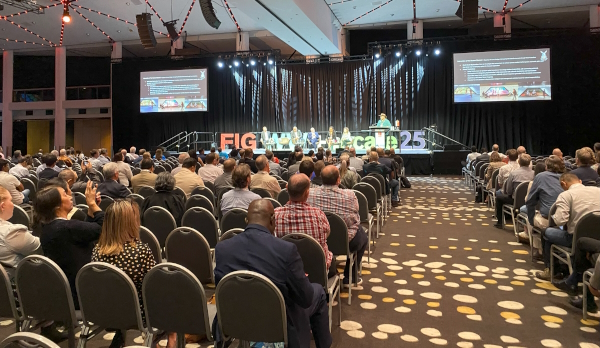
Monday plenary session
The first day at the plenary sessions Geography Championing a Digital
generation; creating value and collaboration in a geospatial ecosystem
was overall theme, with Mr Greg Scott, former UN-GGIM and now PVBLIC
Foundation, World Bank approach to Land Rights and Climate Goals by Mr
Stamatis Kotouzas, Innovating Global Geospatial Knowledge to Bridge the
Digital Divide by Dr Li Penge, head of the new United Nations Global
Geospatial Knowledge and Innovation Centre (UN-GGKIC) in China and the
ESRI approach to GIS and the Geospatial Ecosystem by Director of Land
Records/Cadastre Solutions Linda Foster.
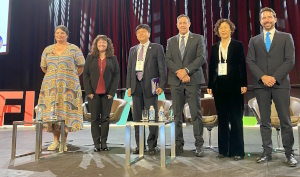
Tuesday plenary session
The Tuesday plenary session had people in the centre in regard to
land relationships in a climate action context. First speaker was Dr
Chariss Griffith-Charles, Trinidad & Tobago on Resilience in human-land
relationships in the face of powerful resource, climate, and social
change which was followed up by four special sessions on the Small
Island Challenges (SIDS). Kenneth Norre, CEO of LE34 approached the
people aspect through the challenges in the Land and Geospatial
workforce. Viliami Folau, Tonga linked Land Climate and people in his
presentation, with further discussions in the SIDS sessions, and finally
Brett Leavy elaborated over how Virtual Songlines Digital Twin (VSDT)
details and documents the continuing First Nations perspectives and
presence within Australia’s major cities and regional towns.
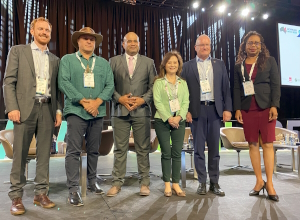
Wednesday plenary session
On Wednesday, Allison Craddock Member of the Geodynamics and Space
Geodesy Group at the NASA Jet Propulsion Laboratory in Pasadena,
addressed the overall topic of the sessions, Building foundational
competencies that support and benefit people; in land, marine and built
environments with a perspective from space on how to create a common
language that translates into meaningful knowledge using geodetic data
and information. Profession Matt King, Directo of the Australian Centre
for Excellence in Antarctic Science, Tasmania talked about Ice Sheets
and Future Shorelines stating that every centimetre of extra sea-level
brings approximately 1 million additional people globally into the zone
impacted by the sea and how satellite geodetic data are increasingly
able to define ice sheet changes and how these data, now of sufficient
duration and robustness, can quite reliably be used for projections over
the coming decades. CEO of Geoscience Australia Melissa Harris followed
up on the “connected world” and how Geoscience Australia is transforming
raw data into actionable insights. Finally Professor Anthony Yeh, the
University of Hong Kong, gave a highly interesting presentation on big
data and smart cities.
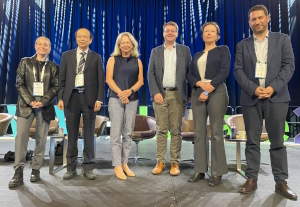
The three plenary sessions were chaired by FIG Vice Presidents Winnie
Shiu, Qin Yan and Michalis Kalogiannakis.
Technical sessions
The technical programme was packed with technical session, high-level
and special sessions, sessions with partners such as UN-Habitat/GLTN,
World Bank and national organisations, various forums, meetings,
workshops and other elements with a broad variety of topics spanning
over the whole spectre of the profession. The sessions were organised by
the Chairs of FIG Commissions, Task Forces, Networks and Permanent
Institutions together with the local organisers and the Queensland
Government.
A special SIDS (Small Island Development) consisting of four sessions
and two meetings were organised by FIG regional networks in cooperation
with several organisations. Three dedicated history sessions were
organised by the new Director of the Permanent FIG Institution of
History, John Brock, who, like in previous years, was so kind to support
the participation of Young Surveyors to the conference. We hope that his
example will be used by others, helping young surveyors to attend the
Working Week.
9th Young Surveyors Conference and other pre-events
The Young Surveyors Meeting should have been held at the Cube, an
inspiring location belonging to the university. In last minute the venue
was changed to another university location close by with a wonderful
view over the city. A packed programme organised by the FIG Young
Surveyors together with the Australian GCA Young and Emerging
Professionals. Under the theme "Next-Gen Geospatial Professionals:
Driving a Digitally Enabled Future", explored the power of emerging
technologies, innovative practices, and global collaboration to shape a
future that is digitally dynamic and sustainable. An impressive
programme was organised by chair of FIG Young Surveyors Shirley Chapunza
Tendai together with her creative and inspiring team. FIG Vice President
Michalis Kalogiannakis attended the opening, and gave his opening
remarks as FIG Council responsible for the Young Surveyors Nework.
https://fig.net/fig2025/youngsurveyors.htm
Thanks to the YS Sponsors:
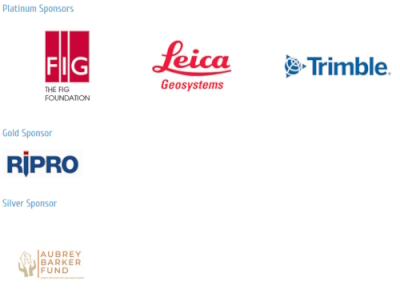
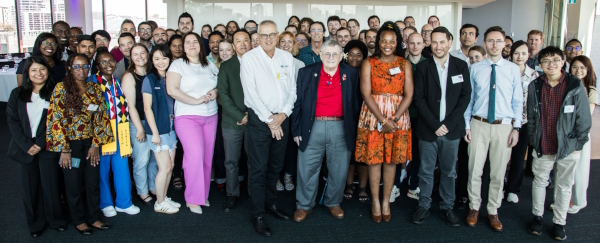
Social events
The Welcome Reception was held on Sunday evening on the north shore
in a garden area at 7th level between buildings and featured a cultural
element as well as a number of Australian animals such as a couple of
Koalas, a snake and a baby-crocodile which could be held by brave
participants.
The Locate Dinner took place on Monday with a good number of
especially national participants. International attendees could attend,
too, to get a feel of the national event, and especially the many awards
that were presented during the evening.
On Tuesday evening the ten FIG commissions invited interested to come
to a dinner location to network and meet fellow attendees. Again,
Brisbane was a perfect location with many restaurants at the South Bank
that could cater for the participants. Commission 5 had 5 previous
Commission chairs/vice chairs attending at the same time – Matt Higgins,
Australia (2003-2006), Rudolf Staiger, Germany (2007-2010), Mikael
Lilje, Sweden (2011-2014), Volker Schwieger, Germany (2015-2018) and Rob
Sarib who has served as vice chair for Matt, Rudolf and Mikael.
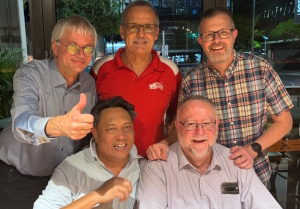
The newly restored Townhall was the location for the Gala Dinner on
Wednesday night. The room was impressive, and 530 participants witnessed
a festive and fun evening. FIG President Diane Dumashie welcomed all,
and hereafter Markus Koper, Trimble, being a faithful sponsor to FIG
Foundation said a few words, too on behalf of Trimble. The Gala
Dinner included the FIG Foundation, too, and a welcome from their side
presented the FIG Foundation grant recipients. The Japanese Company (and
Bronze sponsor) Ripro, funded a young surveyor from Ukraine to attend.
The dinner was amazing in the beautiful townhall room and included
the conference song, also performed in the Opening Ceremony, written and
performed by Martin Belbic, entertainment by singing waiters during the
dinner, and after the dinner a wonderful band that made all participants
get up and dance merrily.
Technical tours
Several well attended technical tours were offered which included a
trip visiting Queensland Government Surveying, Spatial and Land
Administration, Technical walking tour showing the preparations for
Brisbane 2032 Olympics, a visit to the Geospatial Innovation and
Neurodiverse Workforce, and the Queensland Government Norfolk
Hydrographic Survey Vessel that cruised up and down Brisbane River. The
Lands Surveying and Mapping Museum was open during the conference days
for interested participants. Further, FIG Commission 3 had organised two
very popular consecutive sessions on Mobile Technologies for Inclusive
Sidewalk Mapping which included a walking tour in Brisbane.
In regard to the tours Brisbane again showed what a perfect
conference city it is as most tours were in walking distance, and no
shuttles or other transportation was needed.
A full day post-tour to the North Stradbroke Island on Friday 11
April attracted around 70 attendees, organised by Queensland Government
with Convenor Steve Jacoby in the lead. A bus and ferry transported all
to the Island where a visit to the local museum was organised which gave
the background for the function of the island. The island was during the
colony time used as quarantine before they were let into the mainland
and Brisbane. The museum gave a good overview of the indigenous
population and how they had lived before the colonisation. Hereafter the
trip took the participants to various sights which included a highly
interesting presentation by a representative of the indigenous people.
He was a lively and amazing story teller, informing about the habits,
life, and beliefs of the indigenous people in a very insightful way.
Thanks to Steve Jacoby and his team for organising this very special
tour.
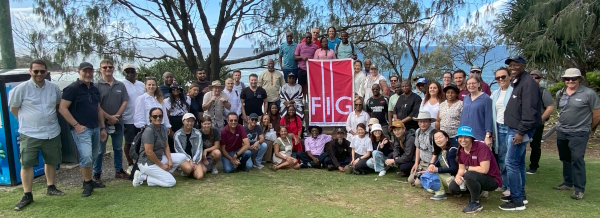
General Assembly and Closing Ceremony
As part of the Working Week the FIG General Assembly was held. Please
see separate General Assembly Report
In the Closing Ceremony, FIG President Diane Dumashie summed up the
activities during this productive and inspiring week. She thanked the
local organisers, with Stephen Jacoby in the lead and Peter James as
chair of the Local Organising Committee for their tireless work for the
preparations, as well as the GCA team with especially Tony Wheeler, Bec
Pascoe and Cate Bonthuys, for their dedicated work.
At the end of the Closing Ceremony Tony Wheeler handed over the FIG flag
to Peter Newmarch representing the local organsing committee for FIG
Congress 2026 in Cape Town South Africa who invited all to South Africa
24-29 May 2026. The Closing Ceremony was followed by a farewell
reception – which was at the same time a welcome to Cape Town.
More information:
Thanks to the sponsors
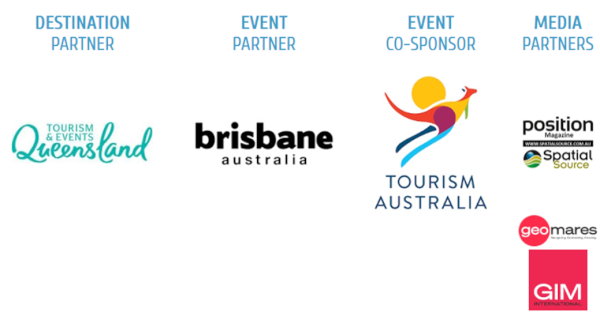
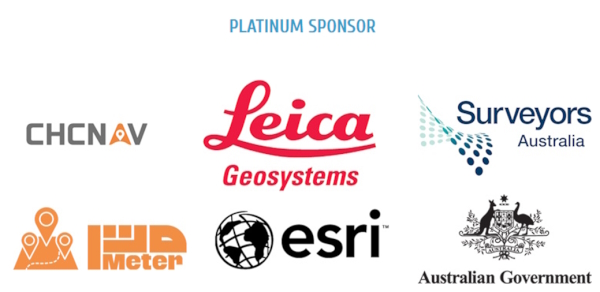



Pictures
Louise Friis-Hansen
June 2025
























